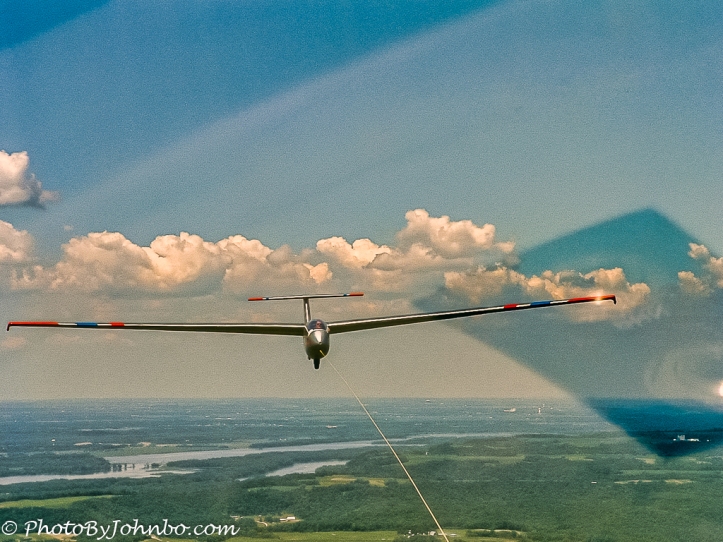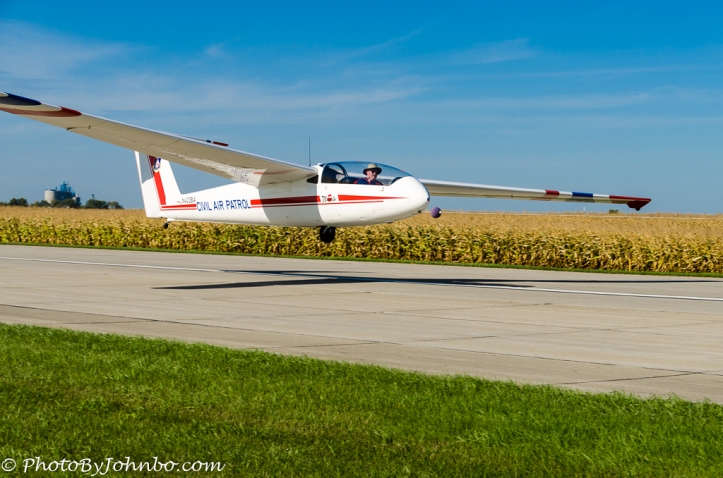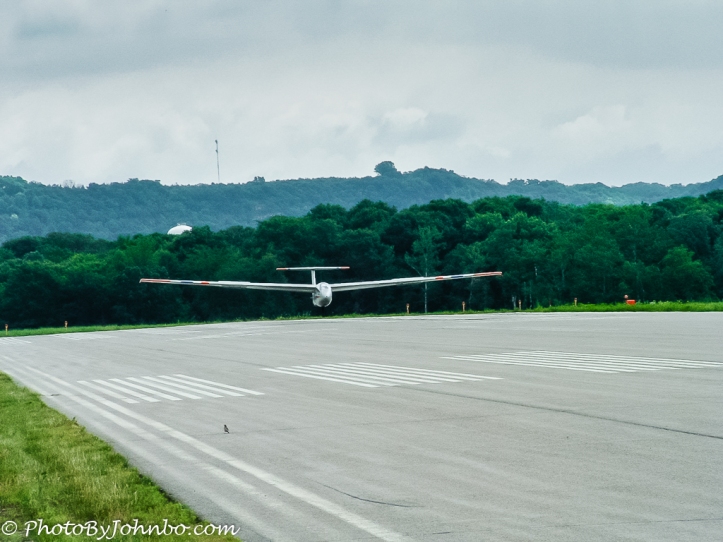Regular readers know of my affinity with all things aviation related. This week, Ann-Christine asks us to share our concept of the term “Magical.” She writes in part, “But Magical can mean so many different things to everyone of us – At Lens-Artists, we have already had Magical Light as a theme, (last year) but this time it is all up to you! What is Magical to you?” You can read her entire challenge post here. So, I’ve always thought that being able to get into an aircraft and visit places unknown is magical in itself. But what about those aircraft who don’t have the advantage of generating any power to keep themselves airborne?
The inventors of the first truly effective powered airplane, Orville and Wilbur Wright, first experimented with flight using aircraft without engines. These gliders have evolved to the point that they can stay airborne for hours, given the right conditions. That’s magical in itself. One example of the high efficiency of gliders is the Blanik L-23, shown in this collection of images. It has a glide ratio of 28:1. Putting that in basic terms, if you somehow bring a glider to an altitude of 5,280 ft (1693 m approx) above the ground and, assuming still air, it can fly in any direction for 28 miles (45 km). Of course, the air is never still, so it’s possible to not make 28 miles in one direction, but in the opposite direction, it would then likely be able to glide even further than that. Updrafts and downdrafts also affect the glider’s ability to stay aloft.
In North Dakota, our glider is most often brought to about 3000 feet (914 m), by a tow plane on a 250-foot (76 m) tow rope. The image above was captured with a camera mounted in the rear window of a tow airplane. The shadow and reflections are due to the plexiglass rear window of the aircraft. There are other ways to bring a glider to flight including towing with an automobile or a specialized winch. Those methods, though, limit the maximum release height to a third of our typical tow plane released height.
The glider’s long wings provide lift early in the tow and the glider is airborne and flying above the runway many seconds before the tow plane is ready to fly. When on tow, the glider is moving about 40-50 percent faster than its normal glide speed so the wind noise is fairly loud. The tow plane is far enough away, though, that it’s engine sound is not noticeable.
The usual missions of the Civil Air Patrol (CAP) gliders are focused on the Aerospace Education portion of our CAP cadet programs. All cadets are offered five powered aircraft and five glider orientation rides. Given the fact that it takes less than 10 minutes to tow a glider to altitude and land the tow plane, a cadet in a glider gets about a 30-minute orientation flight. Obviously, pilot proficiency is another important part of the glider program. In the image above, a glider pilot just beginning his tow sequence is maintaining proficiency.
In the image above, the view from the glider shows how far the tow plane is from the glider. At the moment the photo was taken, the aircraft and glider were just beginning a left turn as you can see by the right tilting horizon. But the magic of the glider doesn’t really begin until the pilot pulls that bright yellow handle in the cockpit and a catch unlatches releasing the glider from its tow line. To avoid airspace conflict, the standard protocol is at the moment of glider release, the tow plane turns left and descends. The glider, since it is being towed at a speed that’s faster than normal, has enough momentum to turn right and climb away from the tow plane. Once the glider reaches the pilot’s desired speed, he or she levels the glider and begins whatever flight maneuvers were planned.
In North Dakota, a typical glider flight lasts about 20 minutes or so from release to landing. In the image above, I couldn’t resist taking a “selfie” of a recent glider flight. That’s me in front and my friend Walt, the glider pilot, while we were doing some flight maneuvers. My log book shows that I have some 65 glider flights, many of them solo, but I never took the FCC required check ride to earn the glider rating on my pilot certificate. While I enjoy the occasional glider ride, I have chosen to concentrate my support of glider activities by being a tow pilot and ground team assistant. For that service, I am rewarded with the occasional glider flight.
Inevitably, it will be time to land and, unlike powered aircraft, the pilot has but one chance to get it right. There is no option to go around to try it again. While that might seem a bit scary, the glider’s aerodynamics are so efficient that there is a lot of latitude for approach speed and landing techniques to assure a safe landing on the airport runway. In over a decade of flying gliders averaging in the neighborhood of 200 flights a year in North Dakota, there has been only one incident of “landing out” where the pilot didn’t quite get back to the runway. There was no damage to the aircraft or pilot injuries to that student pilot as he simply landed the aircraft in the farmer’s field just south of the airport. Landing out is an occasional occurrence and glider pilots are trained from the beginning in the proper procedures to safely land on surfaces other than solid concrete runways.
My thanks to Ann-Christine for giving us a photo challenge that magically helped me share my love of aviation. Feel free to select an image above to get a better view.
John Steiner






Very impressive John, it must be amazing (aka magical) to fly silently through the air!
Indeed it is. I don’t know which is more magical, a glider or a hot air balloon. Both bring relatively silent flight to those lucky enough to participate.
Did a balloon over vineyards in Australia once. It was indeed magical. I remember bursting thru cloud cover into a gorgeous sunstar- so I know just what you mean about silent flight
Having frequent Vertigo issues, I shall leave my Gliding experiences to your writing, Great Pics and fine article.
Sorry for your vertigo issues. I have other friends who suffer from the same malady.
Thank you for share your love of aviation and adventure, John! Great photos.
I know that post was far more verbose than the usual photo challenge… when I get to talking aviation… I can’t stop myself. >grin<
Great post and photos, John. I often wish I was a bird. 🤣
Thanks! Riding in the glider is as close to a bird as anyone can become, I’d guess.
Great story of a magical experience, John! Thank you for taking us – I often wish I got the opportunity to try a glider, or a hot air balloon. My dream is to fly over Cappadocia in Turkey. Maybe some day…Excellent entry!
Thanks… it is certainly more verbose than my usual challenge responses.
;-D
[…] John (photobyjohnbo) shares his love of aviation: “My log book shows that I have some 65 glider flights…” […]
As a retired CAP member who has flown as a passenger in gliding, I appreciate you sharing your CAP & gliding experiences with others.
Thanks for stopping by and commenting! I enjoy sharing some of the CAP experiences I’ve had over the years.
That is pretty cool that there was only one off runway landing out of so many! What awesome fun gliding seems to be
Magical indeed
One of the best for the sheer fun of aviation!
😊☀️
I admire your desire to fly in a cigar tube with no engine. I’m more comfortable a lot closer to sea level. LOL Great pics your sense of adventure is contagious!
After over 20 years and well over 2000 hours in small aircraft, I still enjoy a new aviation experience…but I won’t be so adventurous as to jump out of a perfectly good airplane. 😀